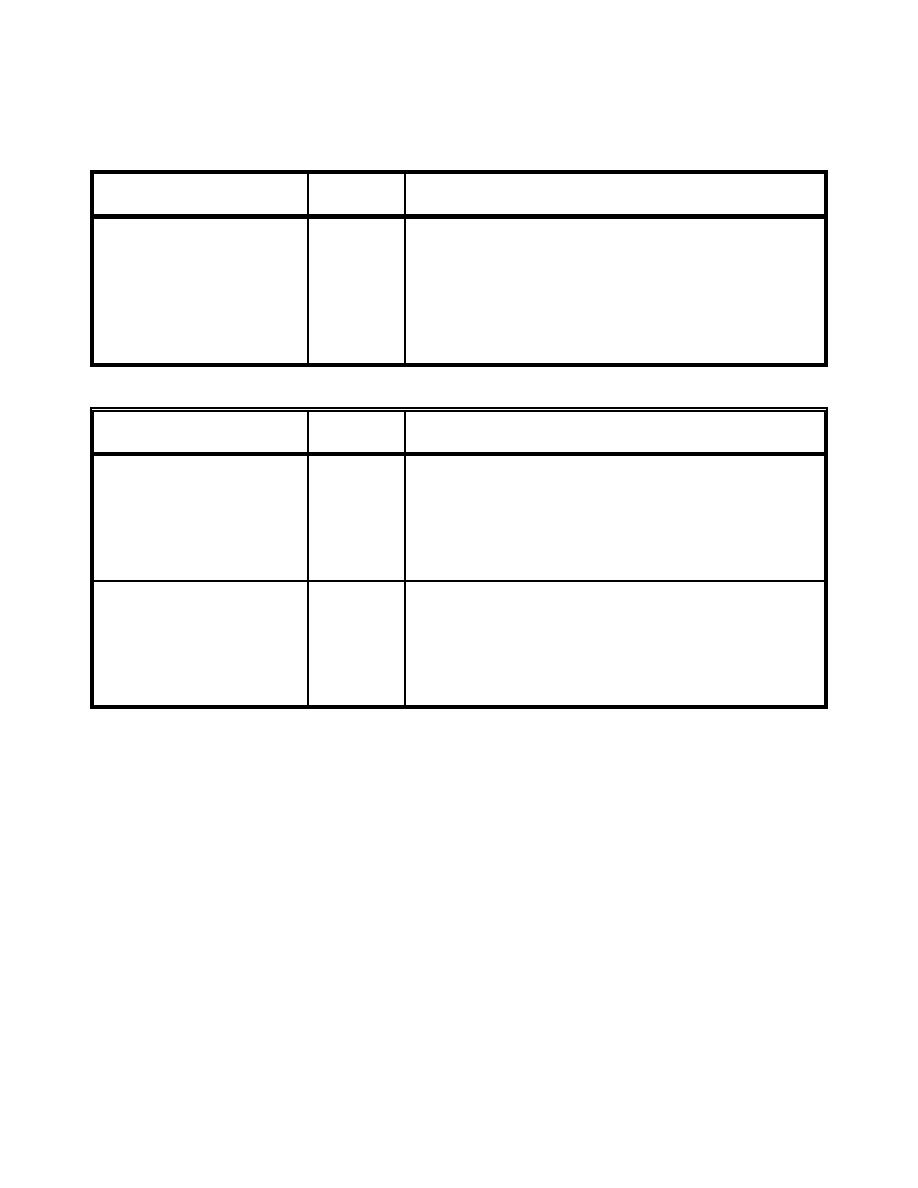
UFC 4-159-03
3 October 2005
Table 2-2. (continued) Examples of Fleet Moorings
b. Vessel Secured at Two Points
MOORING TYPE
FIGURE
NUMBER
DESCRIPTION
Bow-Stern Mooring
2-9
A vessel is moored with one buoy to the bow and
another to the stern. This system has a much
smaller watch circle than a vessel at a single
mooring buoy. Also, two moorings share the load.
However, the mooring tension can be much higher
if the winds, currents, or waves have a large
broadside component to the ship.
c. Vessel Secured at Multiple Points
MOORING TYPE
FIGURE
NUMBER
DESCRIPTION
Med-Mooring
2-10
The vessel bow is secured to two mooring buoys
and the stern is moored to the end of a pier or
wharf. This type of mooring is commonly used for
tenders or in cases where available harbor space
is limited. Commonly used in the Mediterranean
Sea. Hence, the term "Med" Mooring.
Spread Mooring
2-11
Multiple mooring legs are used to secure a vessel.
This arrangement of moorings is especially useful
for securing permanently or semi-permanently
moored vessels, such as floating drydocks and
inactive ships. The ship(s) are usually oriented
parallel to the current.
9


 Previous Page
Previous Page
